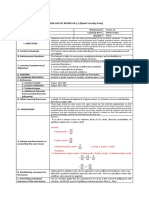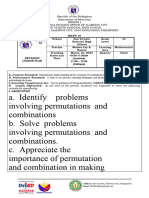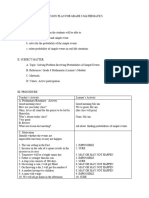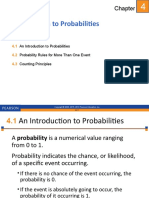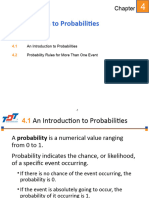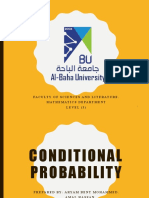0% found this document useful (0 votes)
9 views12 pagesConditional Probability
The document explains conditional probability, which is the likelihood of an event occurring given that another event has already happened. It provides definitions, formulas, and examples to illustrate how to calculate conditional probabilities in various scenarios. Additionally, it includes exercises and assignments to reinforce understanding of the concept.
Uploaded by
theaparagas1Copyright
© © All Rights Reserved
We take content rights seriously. If you suspect this is your content, claim it here.
Available Formats
Download as PPTX, PDF, TXT or read online on Scribd
0% found this document useful (0 votes)
9 views12 pagesConditional Probability
The document explains conditional probability, which is the likelihood of an event occurring given that another event has already happened. It provides definitions, formulas, and examples to illustrate how to calculate conditional probabilities in various scenarios. Additionally, it includes exercises and assignments to reinforce understanding of the concept.
Uploaded by
theaparagas1Copyright
© © All Rights Reserved
We take content rights seriously. If you suspect this is your content, claim it here.
Available Formats
Download as PPTX, PDF, TXT or read online on Scribd
/ 12







